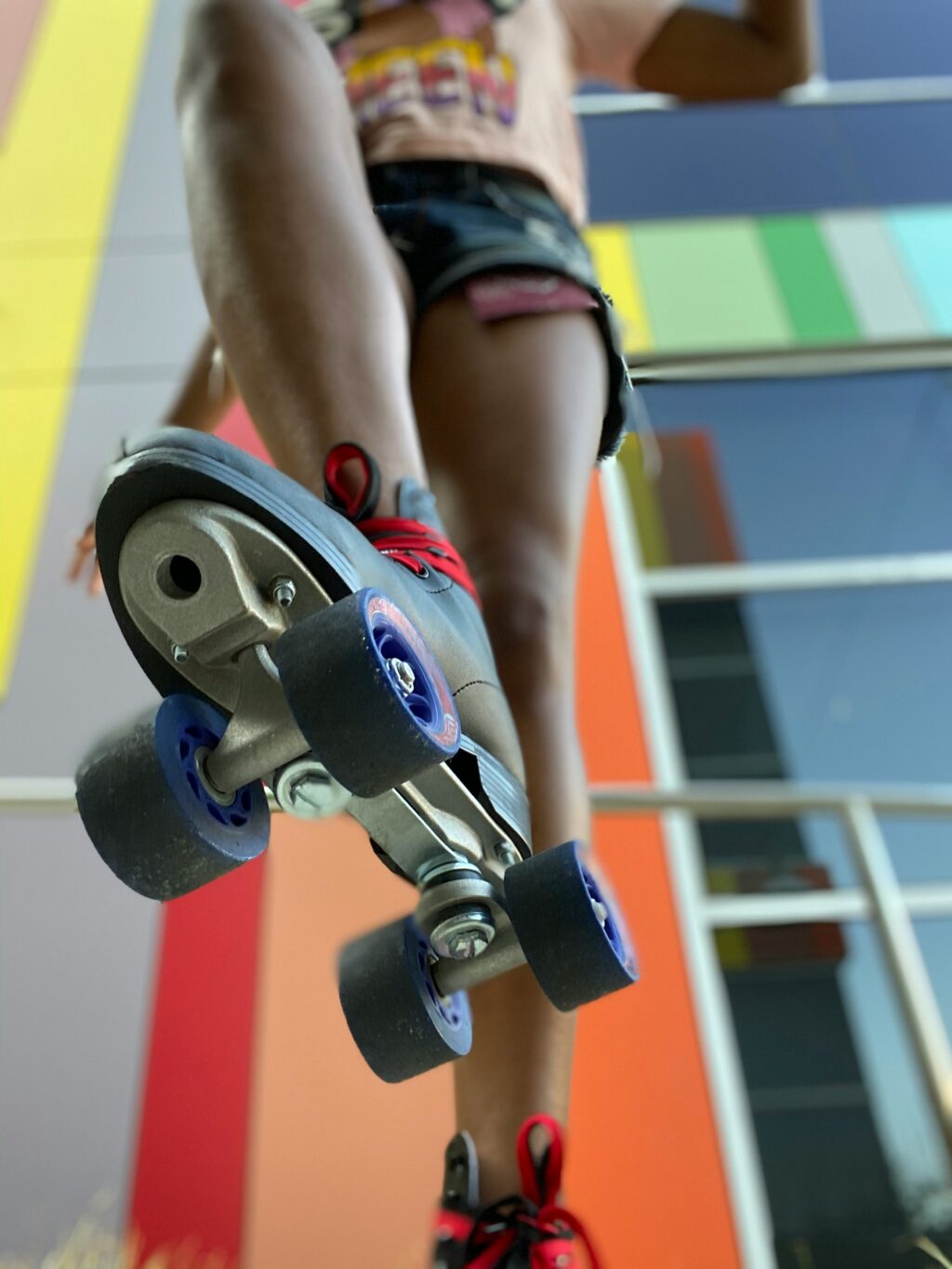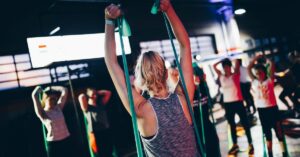Unleashing Your Inner Athlete Through Mindful Movement

Unleashing Your Inner Athlete Through Mindful Movement
Have you ever watched an athlete in their element—every movement fluid, every breath purposeful—and thought, “I wish I could do that”? It’s easy to feel disconnected from our physical selves in a world dominated by screens and sedentary habits. But what if I told you that the key to unlocking your inner athlete lies not just in rigorous training or fancy equipment, but in the simple practice of mindful movement? Let’s explore this fascinating intersection of physicality and mindfulness, and how it can transform not just your performance, but your overall well-being.
The Essence of Mindful Movement
To understand mindful movement, we first need to dissect what it means to be “mindful.” Essentially, mindfulness is the practice of being fully present in the moment—aware of your thoughts, feelings, and physical sensations without judgment. When we apply this concept to movement, it becomes a powerful tool for enhancing our athletic abilities and overall health.
Imagine this scenario: You’re in a yoga class, and the instructor says to focus on your breath and the sensation of your body stretching. At first, it feels a bit odd—your mind is racing through your to-do list, and you can’t quite shake that itch to check your phone. But as you breathe deeply and move through the poses, something shifts. The chaos fades, and you become acutely aware of every muscle engaging, every joint moving in harmony. This is mindful movement in action.
Why Mindful Movement Matters
Mindful movement isn’t just about finding zen on the yoga mat. It has profound implications for athletes of all levels. Here are a few reasons why incorporating mindfulness into your physical activities can be a game changer:
- Increased Awareness: Mindful movement sharpens your awareness of your body and its limits. This heightened sense of awareness can help prevent injuries by ensuring you’re conscious of your movements.
- Enhanced Performance: When you focus on the present moment, you’re more likely to perform at your peak. Athletes often report that they feel more connected to their bodies during competition when they practice mindfulness.
- Improved Recovery: Mindfulness can aid in recovery. By tuning into your body’s signals, you can better understand when to push through the discomfort and when to rest.
- Stress Reduction: The pressures of athletic performance can be intense. Mindful movement provides a mental break, helping to reduce anxiety and improve focus.
It’s no surprise that many professional athletes—think of the likes of LeBron James or Serena Williams—incorporate mindfulness practices into their training regimens. They know that the mind plays a crucial role in performance, and harnessing that power can lead to remarkable results.
Practicing Mindful Movement
So, how do you start incorporating mindful movement into your routine? It doesn’t require a complete overhaul of your lifestyle. In fact, it can be as simple as changing your mindset during your existing workouts. Here are some practical ways to get started:
1. Start with Breath Awareness
Before you even tie your shoelaces, take a moment to check in with yourself. Sit quietly for a few moments, focusing on your breath. Inhale deeply through your nose, letting your belly expand, and exhale slowly through your mouth. As you do this, notice how your body feels. Are there areas of tension? Do you feel energized or fatigued? This simple practice sets the stage for mindful movement.
2. Slow Down Your Movements
Whether you’re running, lifting weights, or practicing yoga, try slowing down your movements. This may feel counterintuitive, especially if you’re used to pushing through workouts at a fast pace. But slowing down allows you to pay attention to every nuance of your body’s mechanics.
I remember my first attempt at mindful running—it was like running in slow motion! But as I focused on each step, I began to appreciate how my feet connected with the ground, the rhythm of my breath, and the subtle shifts in my muscles. It transformed my run from a mindless activity into a moving meditation.
3. Tune into Your Senses
As you engage in physical activity, try to amplify your sensory experiences. What do you see, hear, smell, and feel? The sound of your breath, the texture of the ground beneath your feet, the smell of fresh air—these details can enhance your connection to the present moment.
For instance, if you’re cycling, notice the wind against your skin, the colors of the trees passing by, or the sound of your tires on the pavement. This sensory awareness can elevate your workout from merely physical to profoundly immersive.
4. Set Intentions
Before beginning a workout, set an intention for what you want to achieve, both physically and mentally. Maybe it’s to push through a challenging set of exercises, or perhaps it’s simply to enjoy the process. Whatever it is, keep it at the forefront of your mind as you move. This practice can provide a sense of purpose and direction.
Mindful Movement Across Different Disciplines
Mindful movement can be applied to virtually any physical activity, from high-intensity training to gentle stretching. Let’s take a closer look at how it can manifest in various disciplines:
Yoga: The Quintessential Mindful Practice
Yoga is perhaps the most recognized form of mindful movement. Each pose (or asana) encourages practitioners to focus on their breath and body alignment. But yoga goes beyond the physical; it cultivates a deeper awareness of the self. There’s a reason why after a good yoga session, people often report feeling lighter, both physically and mentally.
Consider a classic pose like Downward Dog. Instead of rushing through it, take a moment to feel the stretch in your hamstrings, the strength in your arms, and the grounding of your feet. This practice of awareness can be carried into other aspects of life—like, say, balancing work and personal time (we all know how tricky that can be!).
Running: From Mindless to Mindful
Running can often feel repetitive and mind-numbing, especially during long distances. However, when approached mindfully, it can transform into a powerful meditative experience. Rather than zoning out with music or podcasts, try running in silence. Focus on your breath, the rhythm of your feet hitting the ground, and the scenery around you. I once tried this during a race and found it oddly liberating—like I was in my own little world, moving with purpose.
Strength Training: More Than Just Muscles
Many people view strength training as purely physical—lifting heavy weights to build muscle. However, integrating mindfulness into your lifting routine can enhance your performance. Instead of just going through the motions, pay attention to your form, the muscles being activated, and your breathing patterns. It’s like having a personal coach in your head, reminding you to engage your core or to keep your back straight.
One trainer I spoke with described it well: “When you lift with intention, you’re not just building strength; you’re also building a connection with your body.” Wise words indeed!
Dancing: The Joy of Movement
Dancing is a fantastic way to embrace mindful movement. Whether you’re twirling in a ballet class or cutting loose at a wedding, dancing invites you to connect with your body and express yourself. The beauty of dance lies in its freedom; there’s no right or wrong way to move. Just let the music guide you, and lose yourself in the rhythm.
Next time you hear your favorite song, don’t just tap your foot—get up and dance! Trust me, it’s a delightful way to unleash your inner athlete while having an absolute blast.
The Science Behind Mindful Movement
Now, let’s take a brief detour into the science of mindful movement. Research has increasingly highlighted the benefits of mindfulness in various forms of exercise. A significant number of studies suggest that mindfulness can reduce stress, enhance emotional well-being, and promote physical health.
One notable study published in the journal Psychosomatic Medicine found that participants who practiced mindfulness during exercise reported lower levels of anxiety and higher overall satisfaction with their workouts. Another study published in the Journal of Sport & Exercise Psychology indicated that athletes who practiced mindfulness showed improved focus and performance during competitions.
These findings align with what many athletes have known intuitively: the mind-body connection is powerful. When you cultivate mindfulness in your movement, you’re not just training your body; you’re training your mind as well.
Overcoming Challenges in Mindful Movement
Of course, like any new practice, mindful movement comes with its own set of challenges. You might find your mind wandering during workouts or feel frustrated when you struggle to maintain focus. But don’t despair! Remember, mindfulness is a skill that requires practice and patience.
Here are a few tips to help you overcome common hurdles:
- Be Patient: Don’t expect to master mindfulness overnight. It takes time to develop this skill, so be patient with yourself.
- Practice Regularly: The more you practice, the easier it becomes. Try to incorporate mindful movement into your routine a few times a week.
- Keep it Fun: Choose activities you enjoy. If you dread your workouts, mindfulness will feel like a chore. Find what makes you feel alive and engaged.
- Forgive Yourself: If your mind wanders, gently bring it back to the present moment. It’s all part of the process.
The Bigger Picture: Mindful Movement Beyond the Gym
Mindful movement isn’t limited to the gym or the yoga studio. It can be woven into the fabric of everyday life. Think about it: how often do we rush through daily activities without a second thought? Whether you’re walking to your car, washing dishes, or even standing in line at the grocery store, there’s an opportunity to practice mindfulness.
Next time you’re out for a walk, pay attention to the sensations in your feet as they touch the ground, the sounds of nature around you, or the feeling of the breeze on your skin. You might just find that these small moments of awareness can bring joy and calm to your day-to-day life.
Conclusion: Embrace Your Inner Athlete
Unleashing your inner athlete is less about physical prowess and more about cultivating a mindful approach to movement. Whether you’re an experienced athlete or just starting your journey, integrating mindfulness into your physical activities can lead to profound changes in your performance, well-being, and overall quality of life.
So, as you lace up your sneakers or roll out your yoga mat, remember that the journey of movement is not just about the destination, but the experience along the way. Embrace the sensations, the challenges, and the joy of being fully present in your body. After all, every one of us has an athlete within—we just have to take the time to listen.
Now, get out there and move mindfully. Who knows? You might just surprise yourself with what you can achieve!





